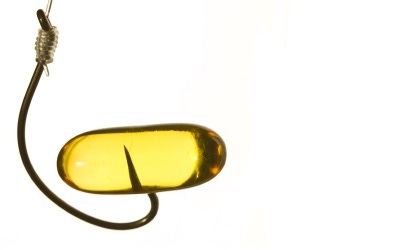May 21, 2013

Omega-3 dietary supplement marketers use an array of product claims on their products' labels to take advantage of consumer demand for anything related to personal health and well-being. Such efforts are also supplemented with pricing strategies that ensure the seller maximizes its return on offering consumer value. However, many sellers do not know the additional markups they should include to ensure the price they charge matches what their target market is willing to pay. To them, it is a guessing game. Unfortunately, this uncertainty on what a given seller should charge can lead to either lost sales if the seller charges more than what some buyers are willing to pay or, in effect, sellers will be leaving money on the table if they charge less than what buyers are willing to pay.
This is increasingly critical in the global omega-3 market. The global market for eicosapentaenoic acid (EPA)/docosahexaenoic acid (DHA) omega-3 ingredients is still in the growth stage of its product lifecycle, and market revenue in 2011 was $1,861.6 million and is likely to grow at a compound annual growth rate (CAGR)of 13.6 percent from 2012 to 2016. Global consumption was measured at 104,673 metric tons in 2011 and is likely to grow at a CAGR of 11.1 percent from 2012 to 2016.
Scientific research continues to be the backbone of all growth factors. It increases awareness among consumers and thus drives the demand for omega-3 products. Research has also increased the consumers willingness to pay for omega-3 and convinced governments of its long-term health and wellness benefits. Supply constraints will be the primary market growth suppressant for many categories during the forecast period. These supply constraints are motivating manufacturers to increasingly offer different products that vary by concentration levels in order to maximize cost-effectiveness.
With respect to high-growth product categories, EPA/DHA concentrates are expected to see significant growth in market share due to customers trading up" from natural 30-percent oils to higher concentrates. This is occurring because consumers are increasingly realizing the true value of a given omega-3 product lies in its total content of EPA/DHA relative to the entire content of a given capsule, and are thus willing to pay more for higher EPA/DHA content. Higher concentrations mean a fewer number of required capsules to consume in order to meet intake recommendations; there is also a perception that higher concentrations of EPA/DHA means higher efficacy.
So how should a manufacturer effectively take advantage of this trend and leave no money on the table regarding possible value-added premiums? Where should research, development, market and sales dollars be spent to ensures this occurs? One way to address this is to determine what a set of target users is likely willing to pay for specific product characteristics in a given product specification that is cost effective in terms of research investment. Specifically, one ought to break down the products price into its core quality attributes and assign marginal implicit prices to each based on exploring large samples of products on store shelves. The ability to truly understand the worth of each quality attribute a given product possesses in the marketplace relative to the commodity alternative arms the seller with a greater ability to use pricing as an effective marketing tool.
As a case study to demonstrate the effectiveness and efficacy of using this approach, Frost & Sullivan explored the products offered by a wide range of omega-3 dietary supplement sellers globally and determined the implicit prices they are charging consumers for various amounts of key quality attributes that all fish oil can and likely possesses. These key attributes include:
· The level of EPA content
· The level of DHA content
· The level of the content for other omega-3s
· The level of omega-6s
· The presence of other ingredients that offer complementary health and wellness benefits
· The use of flavoring
The results of this analysis indicated all of the aforementioned attributes have statistically significant positive price mark-ups. Sellers are charging on average an additional 5-percent premium for every 5-percent increase in EPA content and are charging on average an additional 13-percent premium for every 5-percent increase in DHA content. By understanding what retail product sellers are charging for various omega-3 product specifications, supplement providers can optimize product technology, marketing and cost strategies to ensure a sustainable profit margin.
This vicious circle of lower production and rising prices will accelerate exponentially if the companys product has a low degree of differentiation, the products buyers have a favorable bargaining position relative to the company, or if industry competition is high.
As much as it seems to be contradictory, the pricing decision cannot be entirely based on a companys financial position and a fixed mark-up on cost. The decision also needs to be based on the environment of the companys industry, especially taking close regard of the nature of its customers and its competition. It should be remembered that the objective of strategic pricing is to proactively manage market uncertainty and exploit market certainties. Thus, the objective of targeted value-based pricing is to minimize the difference between what a buyer is willing to pay and what the seller is willing to charge for a given product. Getting to this perfect balance is not easy, but obtaining this balance is possible by discovering quality attributes that differentiate the product offering relative to its rivals.
Christopher Shanahan is the global program manager, food and agriculture, for Frost & Sullivan.
About the Author(s)
You May Also Like




.png?width=800&auto=webp&quality=80&disable=upscale)